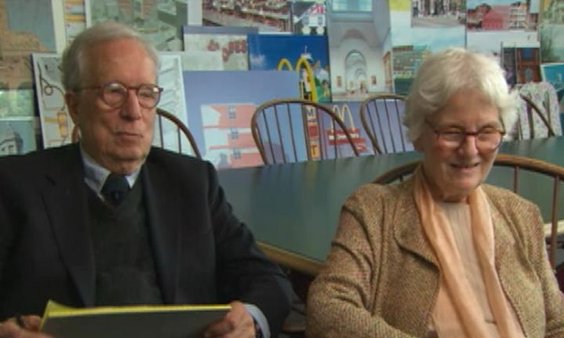NEXT STORY

The Sainsbury wing of the National Gallery, London (Part 4)
RELATED STORIES

NEXT STORY

The Sainsbury wing of the National Gallery, London (Part 4)
RELATED STORIES



[RV] Just real quickly, about the interior, you could just… I’ve just rewritten something about this, I was asked to, about three elements on the inside: lighting, space and symbolism. And the… it is… if you’re an American doing a typical American museum, you assume that the space has to be flexible because the museum art elements are going to vary over time. In this case, this is a collection which is the greatest collection of Renaissance – Italian Renaissance – paintings in the world outside of Italy. And so you’re not going to change, it’s going to be the same. You’re not going to buy a new Raphael every five years. So we made it, with the assumption was that it will more or less be the same forever on that. The second was that the lighting has to be very carefully done because they wanted, appropriately, some natural light, but the natural light has to be very carefully controlled for the sake of preservation of the paintings. So we have clere storeys at the top where we have very, very, very up-to-date, complex, sophisticated technical elements that control the light, as the light changes over time, a cloud goes by and things like that. And then, we made the symbolism inside connect with the architecture of Sir John Soane’s gallery called Dulwich. And that was one that we liked, Dulwich, also the client liked Dulwich. And so, we, kind of, made it in the historical style of Dulwich and not just plain Modern, because plain Modern didn’t work for other reasons as well. And that of course, irritated some people who were pure Modernists.
Internationally renowned architects Robert Venturi (1925-2018) and Denise Scott Brown (b.1931) have helped transform contemporary design through their innovative architecture and planning. Winners of numerous prestigious awards, their designs have championed multiculturalism, social activism, symbolism, pop culture, history and evolving technologies.
Title: The Sainsbury wing of the National Gallery, London (Part 3)
Listeners: Thomas Hughes
Thomas Hughes is Mellon Professor Emeritus of the History of Science at the University of Pennsylvania and Distinguished Visiting Professor at the Massachusetts Institute of Technology. His most recent books include Human Built World, Rescuing Prometheus and American Genesis. He is a member of the American Philosophical Society, US National Academy of Engineering, Royal Swedish Academy of Engineering Sciences and the American Academy of Arts and Sciences.
Duration: 2 minutes, 3 seconds
Date story recorded: 22nd to 23rd September 2006
Date story went live: 27 May 2010